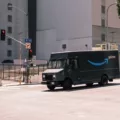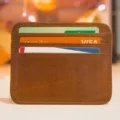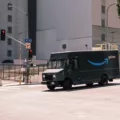When you order something online and it’s not available, your purchase is put on backorder. Backordering means that the item is not in stock at the moment, but it will be shipped to you as soon as it becomes available again. Sometimes an item goes out of stock because it’s being discontinued, and other times there might be a delay in manufacturing.

In any case, if you’ve placed an order for an item that’s currently out of stock, then you’re on the waiting list for that product. Backordering usually happens when a customer orders something that’s popular and sells out quickly. So if you’re looking for a specific product and don’t want to miss out, then placing a backorder might be your best bet.
Of course, there’s always a risk involved with backordering. For one thing, you don’t know how long you’ll have to wait for the item to come back in stock. And there’s also a chance that the item might not be available again at all. So if you’re thinking about backordering something, make sure you’re okay with the potential risks before you proceed.
How Long Does Backorder Usually Take?
A backorder occurs when a customer orders an item that is not currently in stock. The company or supplier then has to order the item from the manufacturer or distributor, which can take some time. Though it depends on the company and product, backordered items generally take abot 14 days. The customer pays for the item, and then the company or supplier is responsible for keeping them updated on the delivery timeline.
What Does It Mean If My Order Is Backordered?
A backordered item is one that is not currently in stock at the time the customer places the order but is expected to be in stock at a later date. The order will be filled as soon as the item becomes available, and the customer will be notified when it does.
What Is The Difference Between Backorder And Out Of Stock?
The main difference between backordered and out of stock is that products are considered out of stock when they do not have any inventory left, while products are considered backordered when they are expected to come in within a determined date. In other words, products are out of stock when they are unavailable for purchase, while products are backordered when they are available for purchase but not yet in stock.
Are Backorders Bad For The Business?
There are pros and cons to backorders for businesses. Backorders can be bad for businesses if products are perishable or easily damaged, as disruptions in backorders can lead to more spoilage or damage. Ecommerce backorders also increase the need for space as companies try to manage fulfillment. However, backorders can also be good for businesses if they result in increased sales due to the lure of unavailable products. Overall, it depends on the specifics of each business and how backorders impact them.
How Do You Deal With Backorders?
There are a few ways to manage backorders:
1. Anticipate order demand. Sometimes it’s easy to forecast when an item will be in high demand. For example, if you’re selling Christmas ornaments, you’ll know that demand will be high in November and December. You can plan ahead by increasing your inventory or placing orders with suppliers well in advance.
2. Diversify beween multiple suppliers. If you have a popular item that’s frequently out of stock, try to diversify your supplier base so you’re not relying on one source for inventory. This will help ensure that you always have stock available.
3. Update product pages for backordered items. Let your customers know which items are currently out of stock and when they’re expected to be available again. This will give them accurate information and avoid any surprises.
4. Provide incentives. If you can’t meet customer demand for a popular item, consider offering incentives like free shipping or a discount on their next order. This can help encourage them to order from you again once the item is back in stock.
5. Ship products separately. When an item is out of stock, consider shipping the rest of the order separately so customers don’t have to wait for eveything to arrive at once.
How Should A Back Order Be Handled?
There are a few thigs that online retailers can do to handle backorders:
1. Don’t process payment until the order can be filled.
2. Offer to partial ship a larger order.
3. Update your website promptly.
4. Consider a consolation offer.
5. Encourage open conversation.
6. Evaluate your inventory system.
7. Evaluate the timeframe of the backorder.








